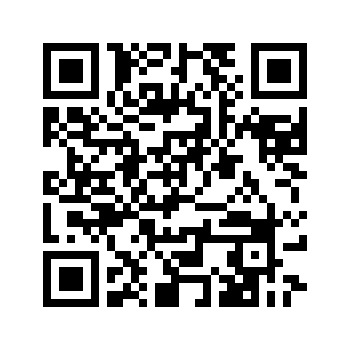CJU Antenna
Ok, I know I just posted about Moxon antennas, but doing an image search for moxon antennas led me to the CJU antenna.
Apparently CJU stands for Canary Jail Umbrella because the author of the article who made it popular constructed it out of the tubing used in canary cages (or jails) and wire from a broken antenna. It’s designed for use talking to satellites which I am interested in, and it’s very small and looks pretty easy to build.
I think it’s a 2 element yagi optimized for 70cm/UHF, and it’s also known as an IOio
It’s constructed with a rectangle of wire, and a length of wire mounted to a small boom. The rectangular element is driven, and the length of wire is the parasitic/reflector element.
LINKS
Moxon antennas
In my search for easy to build antennas I can use in the VHF/UHF frequency range I have stumbled across the moxon antenna.
The antenna was mentioned in passing in Groundwave, the OARC’s newsletter. It looks like the antenna can be constructed with 2 pieces of wire cut to appropriate lengths for your wave length. The wires are laid out in a rectangle with a small gap between them. Only one of the antennas is “active”, which is to say only one wire has feedline attached to it. The other wire is “parasitic”, meaning that it’s important for magical RF reasons (waves hands mysteriously). It’s also a directional antenna, which means that it has better reception when it’s “pointed” at the source
If I can find a good souce of solid copper wires, then I’m definetly going to consider making this antenna.
Links
Helical and monopole antennas
Today’s reseach: helical and monopole antennas!
One of the things you can do with radios (and without needing a license) is receiving NOAA weather satelite images! Yes, that’s right, you can LISTEN TO SPACE MACHINES. Another way to look at it is free selfies!
Anyway I was reading this article (Helical Quad Antenna for Weather Satellites) which walks through the process of building a better antenna for receiving these satellites. These NOAA satellites transmit in the VHF (~140MHz / 2m) range so the antenna is tuned for that. From a quick skim through it seems a bit more involved than what I need in my exploratory phase but the author does mention that they started with “a 1/4 wave whip with a 4-wire ground plane” so I started looking into that.
This led me to the wikipedia article on Whip antennas which led me to the wikipedia article on Monopole antennas which [ERR: WIKIPEDIA ARTICLE RECURSION LIMIT REACHED]
Reading through that article led quite a few things to click in my head. One thing that I hadn’t quite grokked properly was the relation between the 2 connection points on radio connectors like SMA and the parts of antenna. A monopole antenna has one of the connectors attached to the thing that most people think of as the antenna. That is, the long wirey sticky-outy bit. The other connection is either attached to the ground of whatever the circuit is (as in a cellphone) OR earth ground via some spike or something OR to a “ground plane”. A ground plane can consist of some kind of solid metal or mesh sheet. It can also consist of a another series of wires, which is what the “4-wire ground plane” was referring to earlier.
Next up I was reading about Helical antennas. These ones look much goofier. For example:

Helical antennas have 2 modes. If the circumference of the helix is a lot less than the wavelenght you want to tune to, it acts just like a monopole (sort of). If the circumference is close to the wavelenth you can send/receive polarized waves. I don’t quite know exactly what that means, but I do know that satelittes transmit polarized signals and that you need a polarized antenna to pick them up properly.
Now, for my purposes I care less about getting a great signal and a lot more about just getting a signal. I think I will spend some time looking into building myself a 2m/VHF/140MHz monopole.
Antenna building research: bazookas
This fall I finally got my Amateur Radio license, which has led me down a deeeeep technical rabbit hole. I want to try and write more so I’m going to be dumping a lot my researching into blog posts.
Tonight’s reseach: Bazooka Antennas
Specifically I am looking at “double bazooka” antenna. From what I can tell these are mostly used as HF antennas (10m to 160m). The only thing you need to construct them seems to be coaxial cable and twin lead.
Basically you cut a piece of coax to “length” for your desired frequency. In the center you strip away just the outer layer of plastic and cut the outer braid in half. Connect the feedline’s center/outer to each half. Do something funky at the ends of the antennas (??)
Links
Rule 110 Part 2: Now with Wearables!
So tomorrow (I guess later today technically) is makerfaire! Yay!
I wanted to share some of the links to stuff for my project for people interested in learning more.
Rule 110
The Wikipedia Page on Rule110 is really good if you want to learn more
The Dress
First off, here is the code running on the dress: https://github.com/tahnok/rule110_dress
And here’s the install link for the app to control the dress: https://play.google.com/store/apps/details?id=me.tahnok.bluefruit.le.connect

The source code for that app is over here: https://github.com/tahnok/Bluefruit_LE_Connect_Android
The Hat
Code for the hat is here: https://github.com/tahnok/BlueBrim, and my build notes / guide is the post before this one
The Weird Interactive Piece Thing
I also have a post about last year. Source code is not in git (sorry)
subscribe via RSS